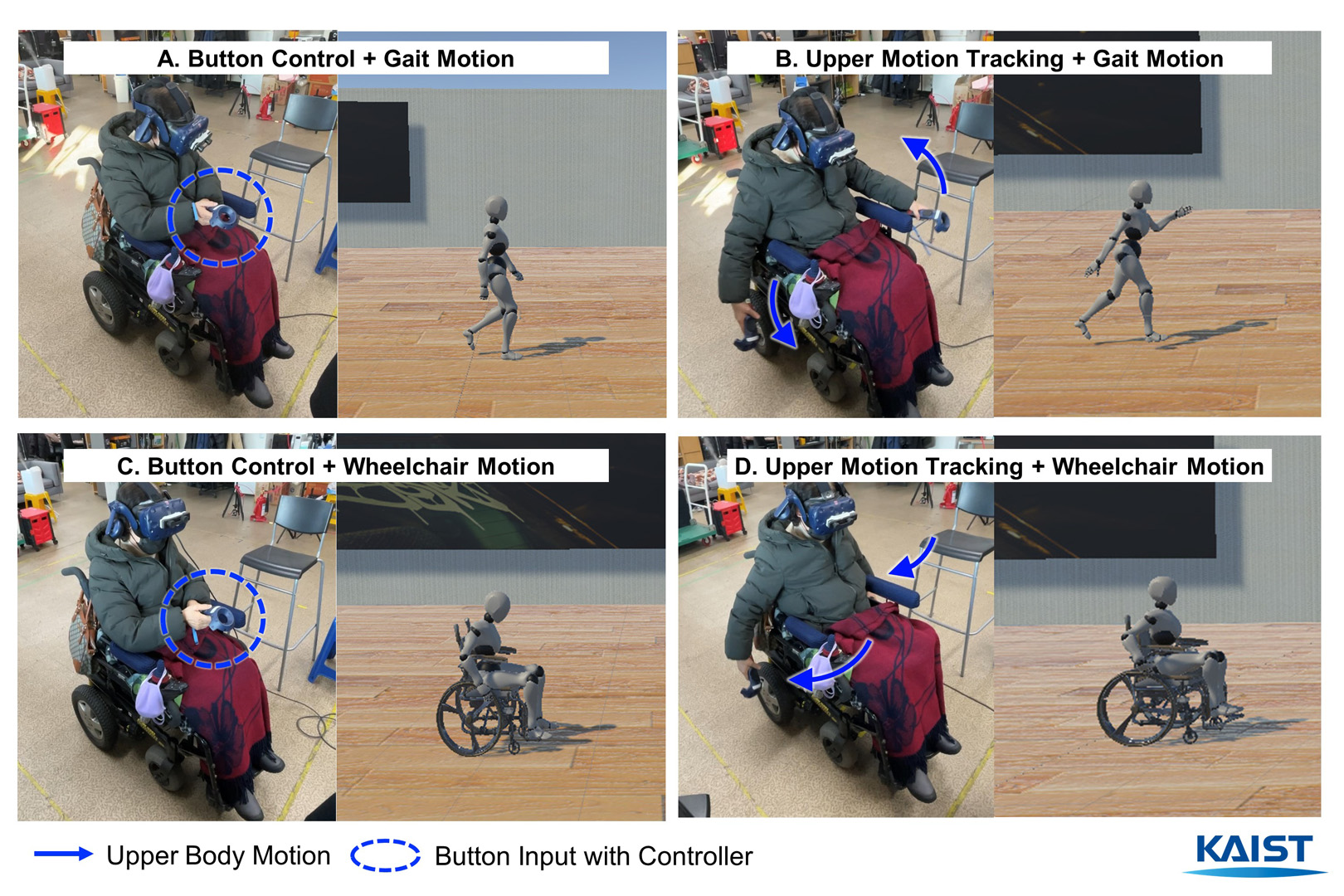“Sense of Embodiment Inducement for People with Reduced Lower-body Mobility and Sensations with Partial-Visuomotor Stimulation” by Jang, Kim, Oh, Lee, Lee, et al. …
Notice: Pod Template PHP code has been deprecated, please use WP Templates instead of embedding PHP. has been deprecated since Pods version 2.3 with no alternative available. in /data/siggraph/websites/history/wp-content/plugins/pods/includes/general.php on line 518
Conference:
- SIGGRAPH 2022
-
More from SIGGRAPH 2022:
Notice: Array to string conversion in /data/siggraph/websites/history/wp-content/plugins/siggraph-archive-plugin/src/next_previous/source.php on line 345

Notice: Array to string conversion in /data/siggraph/websites/history/wp-content/plugins/siggraph-archive-plugin/src/next_previous/source.php on line 345

Type(s):
Entry Number: 09
Title:
- Sense of Embodiment Inducement for People with Reduced Lower-body Mobility and Sensations with Partial-Visuomotor Stimulation
Presenter(s):
Description:
To induce the Sense of Embodiment (SoE) on the virtual 3D avatar during a Virtual Reality (VR) walking scenario, VR interfaces have employed the visuotactile or visuomotor approaches. However, people with reduced lower-body mobility and sensation (PRLMS) who are incapable of feeling or moving their legs would find this task extremely challenging. Here, we propose an upper-body motion tracking-based partial-visuomotor technique to induce SoE and positive feedback for PRLMS patients. We design partial-visuomotor stimulation consisting of two distinctive inputs (Button Control & Upper Motion tracking) and outputs (wheelchair motion & Gait Motion). The preliminary user study was conducted to explore subjective preference with qualitative feedback. From the qualitative study result, we observed the positive response on the partial-visuomotor regarding SoE in the asynchronous VR experience for PRLMS.
References:
- Alberto Cannavo, Davide Calandra, F. Gabriele Prattico, Valentina Gatteschi, and Fabrizio Lamberti. 2021. An Evaluation Testbed for Locomotion in Virtual Reality. IEEE Transactions on Visualization and Computer Graphics 27, 3 (Mar 2021), 1871–1889. https://doi.org/10.1109/tvcg.2020.3032440
- Konstantina Kilteni, Raphaela Groten, and Mel Slater. 2012. The sense of embodiment in virtual reality. Presence: Teleoperators and Virtual Environments 21, 4(2012), 373–387.
- Elena Kokkinara and Mel Slater. 2014. Measuring the effects through time of the influence of visuomotor and visuotactile synchronous stimulation on a virtual body ownership illusion. Perception 43, 1 (2014), 43–58.
- Morgan McCullough, Hong Xu, Joel Michelson, Matthew Jackoski, Wyatt Pease, William Cobb, William Kalescky, Joshua Ladd, and Betsy Williams. 2015. Myo Arm: Swinging to Explore a VE. In Proceedings of the ACM SIGGRAPH Symposium on Applied Perception (Tübingen, Germany) (SAP ’15). Association for Computing Machinery, New York, NY, USA, 107–113. https://doi.org/10.1145/2804408.2804416
- Yun Suen Pai and Kai Kunze. 2017. Armswing: Using Arm Swings for Accessible and Immersive Navigation in AR/VR Spaces. In Proceedings of the 16th International Conference on Mobile and Ubiquitous Multimedia (Stuttgart, Germany) (MUM ’17). Association for Computing Machinery, New York, NY, USA, 189–198. https://doi.org/10.1145/3152832.3152864
- Preston Tunnell Wilson, William Kalescky, Ansel MacLaughlin, and Betsy Williams. 2016. VR Locomotion: Walking > Walking in Place > Arm Swinging. In Proceedings of the 15th ACM SIGGRAPH Conference on Virtual-Reality Continuum and Its Applications in Industry – Volume 1 (Zhuhai, China) (VRCAI ’16). Association for Computing Machinery, New York, NY, USA, 243–249. https://doi.org/10.1145/3013971.3014010






